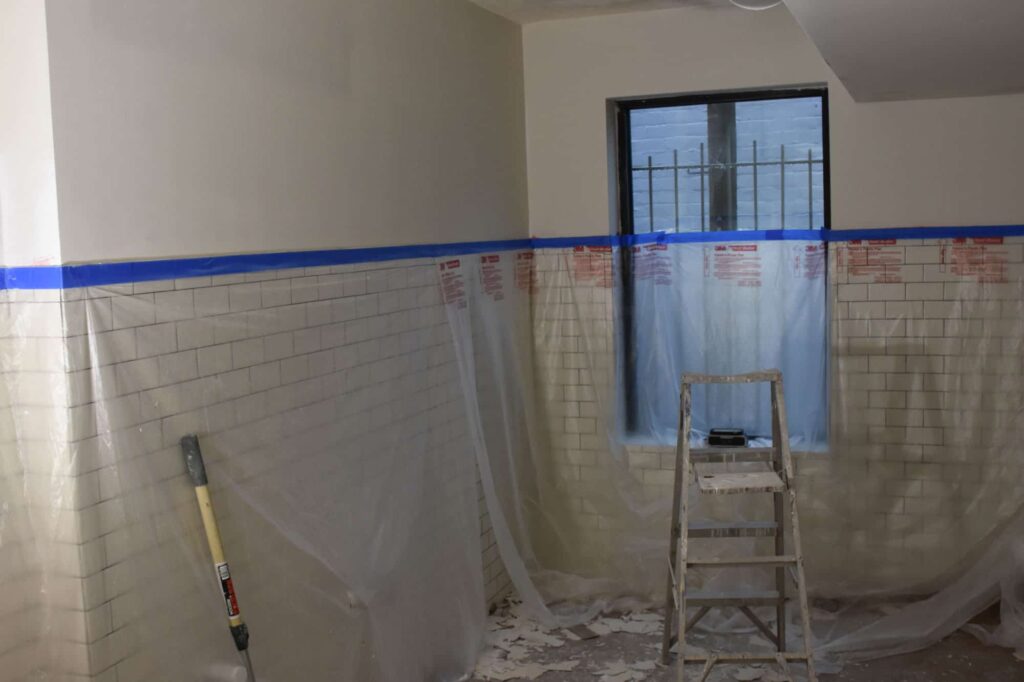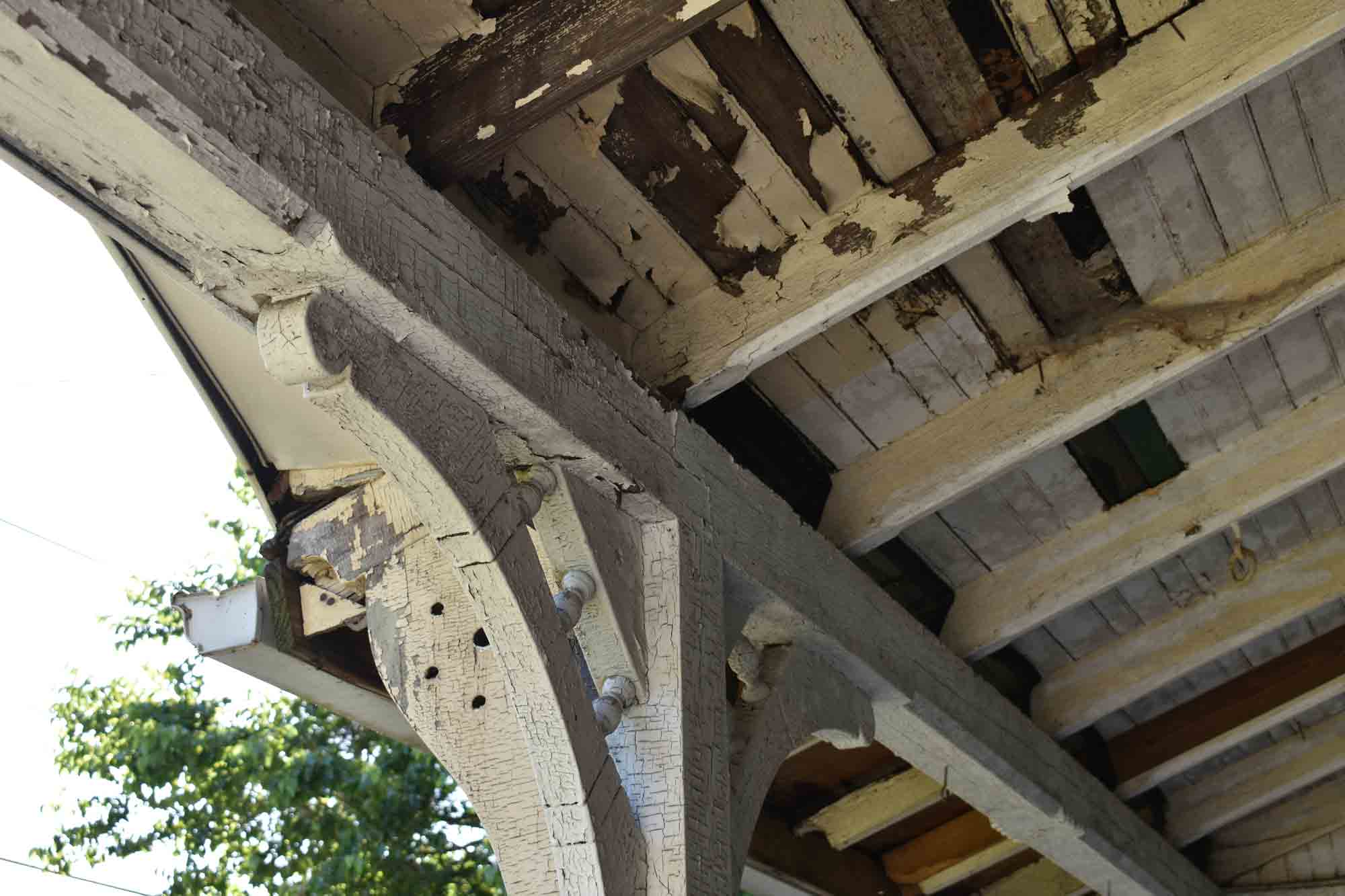Contact Us Today!

Lead Paint Presence?
Lead paint was once applied to homes of all kinds across the United States. However, once lead was linked to a wide range of disorders and sicknesses, it was banned by the federal government in 1978. However, because of its widespread use, lead paint still may be present in some older homes. And lead paint – especially if it is chipping or dusting – can be extraordinarily dangerous.
If you have lead paint or are unsure if your home has lead paint, know that Pro Service Builders is an expert at both diagnosing and abating this potential danger. Since 2014, we have helped our neighbors across Arkansas safely remove lead paint from their homes. And we are always ready to help you achieve a safer environment for you and your family.
Why Choose Us?
It is imperative that you hire trained experts to perform lead paint abatement. Imprecise lead paint removal can create more dangers than it solves. That’s why Pro Service Builders offers meticulous and safety-first lead paint abatement. Our fully certified, licensed, insured, and bonded lead paint removal team prides itself on helping people make their homes safe. That means we deliver exceptional customer service, as well as dependable abatement work that will remove all dangers associated with lead paint. Connect with us now to get started with an estimate.
How Common is Lead Paint?
If your home was built before 1978, there’s an increased chance that it has lead-based paint. In 1978, the federal government banned consumer use of lead-based paint. However, lead-based paint may still be present in millions of homes – under layers of newer paint. If you have an older home but your new paint is in good shape, the lead-based paint may not be a concern. However, deteriorating lead-based paint is a hazard that requires immediate and professional attention.

We’re Here to Help
Pro Service Builders is ready to help you safely remove any hint of lead-based paint from your home. Our professionals fully understand the strict safety measures and disposal methods that must be undertaken to safely abate lead paint. Our team is standing by, ready to answer your call and ensure that your home is lead-free.
Have an Emergency? Contact us Today!
24/7 Emergency Response
100-plus years combined experience
Fully Bonded and Insured
5-star Rating
Lead Paint 101
Undisturbed, lead paint may not always be dangerous. However, it’s hazardous enough that it was banned for consumer use. And there’s a reason for that. Lead can make adults extremely sick and do irreversible damage to children and the unborn. Lead paint abatement also requires strict safety precautions, as well as disposal methods.
- Lead paint can inflict serious harm
- Lead paint poisoning is still a thing
- Upkeep is key to reducing risk
- Common abatement methods
- Clean-up is also important
Lead paint can inflict serious harm Children affected by lead paint poisoning may suffer from lower intelligence, learning disabilities, and behavioral issues. Adults who are exposed to lead paint can suffer from high blood pressure, headaches, dizziness, diminished motor skills, fatigue, and memory loss. Lead paint only requires small levels of exposure to pose a threat to your health.
Children affected by lead paint poisoning may suffer from lower intelligence, learning disabilities, and behavioral issues. Adults who are exposed to lead paint can suffer from high blood pressure, headaches, dizziness, diminished motor skills, fatigue, and memory loss. Lead paint only requires small levels of exposure to pose a threat to your health.
Lead paint poisoning is still a thing Because lead paint is often present underneath layers of newer/safe paint, it is not necessarily an immediate threat. However, recent research shows that new cases can be directly linked to renovations where the work environment was inadequately contained.
Because lead paint is often present underneath layers of newer/safe paint, it is not necessarily an immediate threat. However, recent research shows that new cases can be directly linked to renovations where the work environment was inadequately contained.
Upkeep is key to reducing risk To reduce sources of lead exposure in older homes, it is critical to inspect and keep all painted surfaces in excellent shape. You should also clean any dust away with a wet cloth or paper towel. If you are considering any renovations, repair, or painting projects, be sure to ask your contractor about the possibility of encountering lead paint and what they will do to ensure your and their safety.
To reduce sources of lead exposure in older homes, it is critical to inspect and keep all painted surfaces in excellent shape. You should also clean any dust away with a wet cloth or paper towel. If you are considering any renovations, repair, or painting projects, be sure to ask your contractor about the possibility of encountering lead paint and what they will do to ensure your and their safety.
Common abatement methods Called “enclosure,” encasing the lead paint in flexible wall covering, paneling, or gypsum board is the simplest abatement method. Enclosure works best on large, flat surfaces that are not subject to friction.
Lead paint removal and replacement is the most thorough method of abatement and will completely remove the threat of lead from your home. However, this must be performed by professionals. This is because removal often causes lead paint particles to be temporarily released into the air. Professionals will take the right safety precautions (by wearing personal protective equipment, respirators, goggles, shoe covers, etc.) and not be poisoned by the temporary presence of airborne lead paint. They will also thoroughly clean the particles from any surfaces on which they land.
Called “enclosure,” encasing the lead paint in flexible wall covering, paneling, or gypsum board is the simplest abatement method. Enclosure works best on large, flat surfaces that are not subject to friction.
Lead paint removal and replacement is the most thorough method of abatement and will completely remove the threat of lead from your home. However, this must be performed by professionals. This is because removal often causes lead paint particles to be temporarily released into the air. Professionals will take the right safety precautions (by wearing personal protective equipment, respirators, goggles, shoe covers, etc.) and not be poisoned by the temporary presence of airborne lead paint. They will also thoroughly clean the particles from any surfaces on which they land.
Clean-up is also important To ensure a safe environment following abatement, a professional will utilize a wide range of tools to remove any remaining lead paint particles, including a HEPA vacuum cleaner, plastic bags or sheet plastic, and duct tape. Once removed, lead paint must be sealed in a plastic bag that is shut with duct tape.
To ensure a safe environment following abatement, a professional will utilize a wide range of tools to remove any remaining lead paint particles, including a HEPA vacuum cleaner, plastic bags or sheet plastic, and duct tape. Once removed, lead paint must be sealed in a plastic bag that is shut with duct tape.

